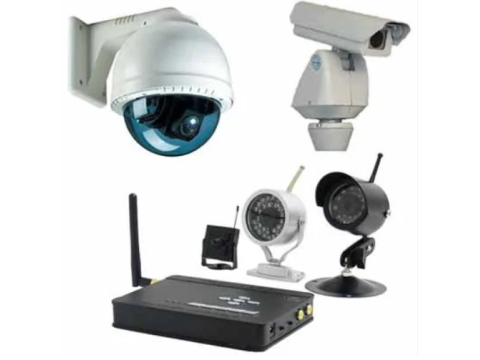Equipment for Video Surveillance Systems
Selection
Installation
When we talk about surveillance systems, the essentials boil down to two main pieces: cameras and recorders (DVR or NVR).
For larger setups — think dozens or even hundreds of cameras — you might swap out recorders for computers or video servers.
Extras you might need?
- Converters
- Transceivers
- Infrared (IR) illuminators
- Switches, routers, and more
Another key player here is the power supply. While crucial, we’re skipping details for now — check out our dedicated power supply guide (linked below).
Surveillance systems fall into two main categories:
- Analog systems
- IP (network-based) systems
Let’s break them down.
Equipment for IP (Network) Surveillance
An IP camera is like a fully independent network device, so you don’t always need a recorder. Connect it straight to a PC via a switch or router, and you’re good to go.
If your IP cameras support cloud services or P2P tech, you can skip most of the extra hardware altogether — great for remote monitoring through the internet.
For a simple setup with one or two cameras, this is golden. Just use your computer or tablet for live views, no on-site devices needed.
For larger setups:
- More cameras = you’ll need switches.
- Want wireless? You’ll need a Wi-Fi router.
- Using PoE (Power over Ethernet)? Look for compatible injectors or PoE-capable switches/recorders.
Equipment for Analog Surveillance
A classic analog setup typically includes:
- The right number of cameras
- A DVR with matching channels
- A power supply
Analog signals usually run over coaxial cable. But, if you’re using twisted pair cables instead, you’ll need extra gear like transceivers.
Don’t forget AHD surveillance: This hybrid tech combines analog simplicity with HD resolution and has been gaining traction.
Choosing Your Equipment
Your surveillance system’s purpose dictates your equipment. Key tasks:
- Picking the right cameras
- Choosing a recorder
- Selecting a power supply
Home Surveillance
Most people lean toward analog gear for home use. It’s user-friendly, reliable, and simple to install. A typical kit includes cameras, a DVR, and a power source.
Internet Surveillance
Remote access is trending big time. Modern DVRs and NVRs usually support internet connectivity right out of the box.
FYI: Both analog and IP recorders work for this. IP setups just offer more flexibility and advanced options.
Ready-Made Kits
Pre-made kits are handy, but don’t forget: every setup is unique. Customization is often better for complex or large-scale systems.
Installing Surveillance Equipment
There are two main install scenarios:
- Indoor
- Outdoor (weatherproof gear needed)
Some outdoor components, like switches, might not be weatherproof, so you’ll need protective enclosures like thermal boxes.
For recording/storage devices, security is key. Hide them or use a locked metal box to prevent theft or vandalism. Just make sure there’s enough ventilation to avoid overheating.
Installing Cameras:
- Mount them on stable, vibration-free surfaces.
- For PTZ (pan-tilt-zoom) cameras, use heavy-duty mounts to handle movement-induced stress.
Storm Protection:
Don’t skimp on lightning protection — it’s an often-overlooked lifesaver for outdoor systems.

